
Terracotta Warriors: mysterious underground army
The Terracotta Warriors is a collection of pottery sculptures depicting the armies of the first Chinese Emperor — Qin Shihuang (260-210 BC). The life-sized terracotta warriors are arranged in formations side by side. They are sculpted with different facial features, clothes and body gestures. However, all of them stand silently, like an army ready for a battle.
Around 30,000 meters away from Northeast of Xi’an, Shaanxi Province of China, there is an unremarkable hill. However, here was buried the first Chinese Emperor – Qin Shihuang. Under the ground not far away from the mausoleum of Qin Shihuang, an army of pottery warriors silently guards the mausoleum of the first Emperor of China, lasting for more than 2000 years. This mysterious underground army is the well-known Qin Shihuang Terracotta Warriors.
THE 8TH WONDER OF THE WORLD
It was not yet 8:00 am, but many visitors already lined up outside the entrance of Terracotta Warriors Museum. After we entered the exhibition hall from a side door, the view before our eyes suddenly opened up. A hall with the size of two football fields has no pillar and only has a pit with a length of 230 meters and a width of 62 meters. In the pit with a depth of 5 meters, there are east-west load-bearing walls built every 3 meters. The life-sized terracotta warriors are arranged in formations side by side. They are sculpted with different facial features, clothes and body gestures. However, all of them stand silently, like an army ready for a battle. There still lingers an air of tension before the battle.
Seeing these Terracotta Warriors, silent Yuan Zhongyi was immediately excited. “This is the only warrior without a beard.” Yuan Zhongyi raised his hand and pointed to a warrior, “This stout warrior was made by a man called Gong Bing.” For him, these pottery warriors seem real persons.
Thirty eight years ago, 42-year old Yuan Zhongyi saw these mysterious terracotta warriors for the first time. In that year, several farmers dug water wells in the woods in Xiyang Village, Lintong County, Shaanxi Province. When they dug 5-6 meters deep, they didn’t find water but several heads and bodies of terracotta warriors. This news spread quickly. Archaeologist Yuan Zhongyi and his colleagues were sent there for further excavation. Initially, they considered it some normal archaeological work. Surprisingly, several days of excavation turned out to be only a tip of an iceberg. In front of them, it’s an unprecedentedly huge pit, which is also one of the most spectacular archaeological discoveries in the 20th century.
Since then, the life of Yuan Zhongyi is tightly bound to these pottery warriors. Through the excavation, 6,000 figurines of warriors and horses were unearthed in Pit 1. Later, Pit 2 and Pit 3 were found nearby. By then, this vast underground army has emerged. “Qin Shihuang Mausoleum is the largest emperor mausoleum in the world. The floor space of Pyramid of Khufu in Egypt is 52,900 square meters while Qin Shihuang Mausoleum is around 250,000 square meters, almost five times more than the Pyramid of Khufu,” Yuan Zhongyi said.
This great discovery surprised every visitor. Former French president Chirac said, “There are seven wonders in the orld. The discovery of terracotta warriors is the 8th one.” Denmark Queen Margrethe is an archeologist. When she entered the exhibition hall she held the hand of a Chinese archeologist and said, “I have been to many archeological sites. But, I never saw such an overpowering scene.” Former American Senate Jackson came to China after he visited Egypt. He said, “Both pyramids and terracotta warriors have profound history. However, there is only one sphinx, but there are thousands of different terracotta warriors. They are splendid and magnificent.” Former Romanian Defence Minister Stanculescu also said after his visit, “The pyramid is great but is comparably rough, while each terracotta warrior and horse is an exquisite artwork.”
SPLENDID UNDERGROUND QIN DYNASTY PALACE
The shock brought by terracotta warriors is indescribable. Looking at these silent warriors, people are curious about what kind of emperor Qin Shihuang was and why he buried these pottery warriors here. Yuan Zhongyi once asked himself these questions.
“Qin Shihuang was born in 259 BC. He assumed the throne at the age of 13. He united China at 39 and died at 50 years old. It took thirty seven years to build his mausoleum, beginning from the year of his succession to the throne until his death on the throne. More than 700,000 labors were used at the peak time,” Yuan Zhongyi said. The Qin Shihuang Mausoleum is gorgeous buried with over 180 pits, such as warrior and horse pit, bronze chariot and horse pit, armor pit, stable pit and rare animal pit, as well as various tombs and Qin palace relics.

In ancient China, people believed that souls would continue to live after death. So, all facilities in his life should be available in his tomb. After Qin Shihuang united China, he established a centralized political system. Imperial power was placed above all. Therefore, his tomb is extraordinarily grand.
“Before he died, Qin Shihuang lived in a grand palace. So, he established an underground palace for his afterlife. The size and construction of his tomb copied the capital of Qin Dynasty, including city walls, bridges, roads, large palaces and auxiliary constructions,” Yuan Zhongyi introduced. “In addition, Qin Shihuang travelled by chariots. So, there are bronze chariot and horse pits. He liked hunting and travelling in his life. So, the rare animal pits are established in the mausoleum. These terracotta warriors symbolize his guards…The idea is to have all he once had in his lifetime when constructing the Qin Shihuang Mausoleum.”
In light of this idea, the underground Qin Shihuang Mausoleum and its neighboring funeral pits copied the Qin palace on the ground. So, modern people have a chance to see the powerful Qin Empire more than 2,000 years later. As stated by Prince Felipe of Spain, the discovery and research on terracotta warriors helped people get to know Chinese culture and history 2,000 years ago, which is an important development phase in human history.
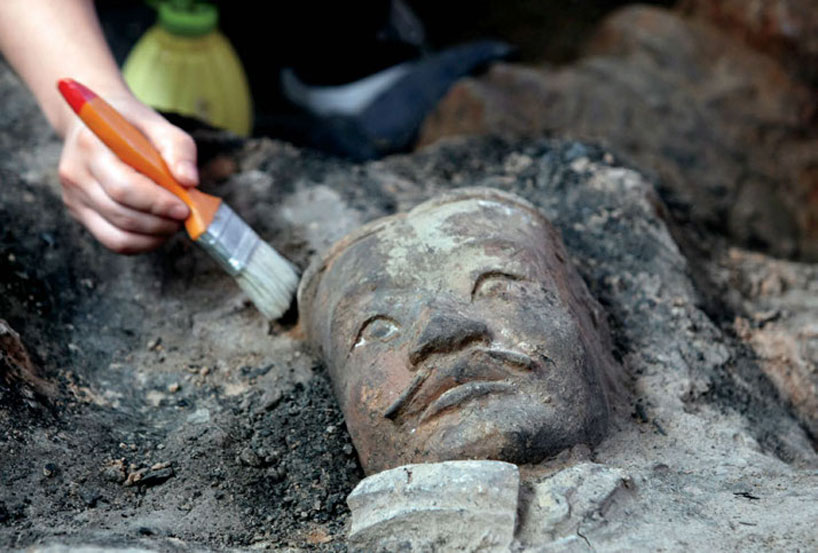
MYSTERIES BEHIND A UNITED EMPIRE
There is no doubt that Qin Empire was a powerful empire in China, even in the world in the 3rd century BC. In the west, the Alexandrine Empire had collapsed while the Roman Empire had not established yet. In the east, this army from the northwest conquered all its opponents wherever it went. How such an amazing army was built over 2,000 years ago? Why was it so invincible? The unearthed terracotta warriors offered some insights.
In warrior and horse pits, the costumes and gestures of these pottery warriors reveal their identity. Some of the statues stretched their arms by holding something. They were warriors holding spears. Some of the statues bent their left legs with right knees on the ground holding an arrow by hand. They were shooters. Some statues pulled on the rein; they were driving chariots…These warriors with different duties were orderly formed into an army.
“Pit 1 is a troop with a square formation. The first three ranks are the vanguard, 38 columns behind are the main force. Two columns on the two sides act as the wings of this army. Three ranks stand at the rear for defense. This square troop is very powerful in the battle,” Yuan Zhongyi introduced.
“Vanguard troop is armed with crossbows. They formed into three ranks because the second and third ranks could prepare for shooting when the first rank was shooting. They could shoot in turns. In nearly 2,000 years after Qin troops, Europeans still use similar ways to organize musketeers. It may be the Qin troops who create this classical formation featuring continuous shooting.”
Modern people not only marvel at the troop design applied by the Qin army but also at their weapons. In warrior and horse pits, over 40,000 three-edge arrowheads were unearthed. These arrows were well-structured with equal length of three edges. The difference is less than 0.55 mm among the three edges. It’s incredible that this streamlined arrowhead has the same shape as modern bullets. You can imagine the power of these scientifically designed arrowheads in the ancient battles.
Also, archeologists are surprised by the exquisite design of Qin crossbows, superb bronze sword smelting technology and advanced large-scale production. “The buried weapons in Qin Shihuang Mausoleum demonstrate their excellent processing technology beyond their times.” Yuan Zhongyi said, “We excavated some bronze swords. They are still shining and stainless, though buried for over 2,000 years.”
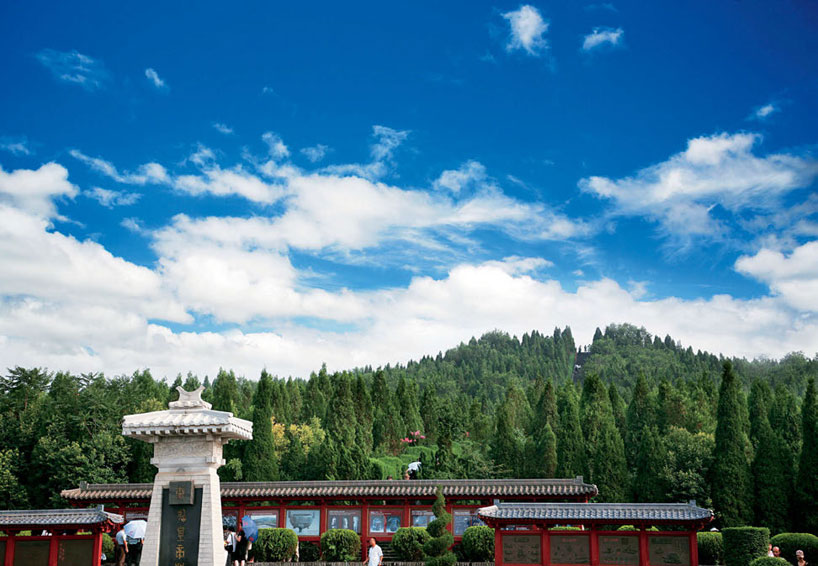
A CLASSICAL MODEL IN WORLD SCULPTURE HISTORY
These silent pottery warriors provide evidences for people to understand the military, cultural and artistic development in Qin Dynasty. Visitors are amazed at the power of these terracotta warriors. Standing in front of these motionless warriors, you can feel the soul-stirring power as strong as the waves of the sea keeping coming one by one. If you carefully watch each warrior, you can find the individual characteristics of each warrior. You can find the personality and character of each warrior from its face and gestures.
“Previously, people believed that Chinese sculpture originated from the period of Wei, Jin, Southern and Northern Dynasties when the Buddhism was introduced to China. Chinese sculptures were thought to be rough and inferior to the ancient Greek and Roman sculptures aesthetically. The unearthed terracotta warriors changed these views,” Yuan Zhongyi said. “The sculpture of magnificent terracotta warriors is exquisite. I spent three months watching each statue. Each statue is different. Hair, face and muscles of each statue are carefully sculpted. Terracotta warriors are classical work in World sculpture history. This also implies that Chinese sculpture had reached a high level in the Qin Dynasty.”
In 2003, Yuan Zhongyi was retired. He has devoted his life to terracotta warriors. A new generation of archeologists is still busy in the pits. They sweep the dust, number each part of the damaged terracotta warriors and horses buried in the yellow earth, and then carefully piece them together.
“Actually, collapsed bodies, damaged heads and arms were everywhere in this pit when we first excavated this pit,” Yuan Zhongyi said. “It’s extremely difficult to repair damaged pottery warriors after over 2,000 years. It often takes us one month or several months to excavate and repair one terracotta warrior or horse. There are many incomplete and damaged pottery warriors and horses because some parts are missing.”
Today, these thousand-year old warriors still attract thousands of visitors per day. These magnificent warriors and exquisite craftworks have conquered every visitor. Over the last 30 years since the discovery of terracotta warriors, these terracotta warriors have visited more than 30 countries and regions and attracted millions of overseas visitors.
In 1987, the Qin Shihuang Mausoleum and its neighboring pits of the Terracotta Warriors were listed as a UNESCO World Heritage Site. The judge panel of the World Heritage commented that no doubt thousands of statues would still remain underground on this archaeological site without the great discovery in 1974. The small figurines around Qin Shihuang Mausoleum with their horses, chariots and weapons, are masterpieces of realism and also hold great historical interest.
World’s Famous Tombs
Pyramid of Khufu
 The pyramid was built as a tomb for the fourth dynasty Egyptian Pharaoh Khufu. It is the oldest and tallest of the three pyramids in the Giza Necropolis. Now, it is located in the suburb of Cairo. Pyramid of Khufu was constructed for over 20 years and completed around 2,560 BC.
The pyramid was built as a tomb for the fourth dynasty Egyptian Pharaoh Khufu. It is the oldest and tallest of the three pyramids in the Giza Necropolis. Now, it is located in the suburb of Cairo. Pyramid of Khufu was constructed for over 20 years and completed around 2,560 BC.Tutankhamun’s Tomb
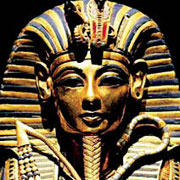 This over 3,300-year old tomb is the most famous pharaoh tomb in the Valley of the Kings in Egypt. It is the first discovered king tomb in the world. Discovered relics are astonishing, including a pure gold coffin, a gold crown, a gold mask, jewelry, statues and double-track chariots.
This over 3,300-year old tomb is the most famous pharaoh tomb in the Valley of the Kings in Egypt. It is the first discovered king tomb in the world. Discovered relics are astonishing, including a pure gold coffin, a gold crown, a gold mask, jewelry, statues and double-track chariots.Tomb Mawangdui Han Tomb
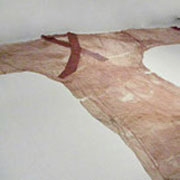 It is located in Changsha, Hunan Province and provides important evidences for the research on Chinese economy, historical culture and customs in the 2nd century BC. In 1972, a well-preserved female corpse was unearthed. Her body was tender and muscles were firm. This is the first ancient wet corpse discovered in the world and currently preserved in Hunan Museum.
It is located in Changsha, Hunan Province and provides important evidences for the research on Chinese economy, historical culture and customs in the 2nd century BC. In 1972, a well-preserved female corpse was unearthed. Her body was tender and muscles were firm. This is the first ancient wet corpse discovered in the world and currently preserved in Hunan Museum.The Taj Mahal
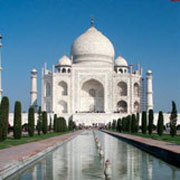 Located in Agra, Uttar Pradesh, India, the Taj Mahal was built by Mughal emperor Shah Jahan in memory of his queen Mumtaz Mahal. The construction of the Taj Mahal began in 1631 and lasted for 22 years. Occupying 170,000 square meters, the Taj Mahal consists of palaces, towers, finials, pools and other buildings. This white marble mausoleum is exquisitely decorated with glass and carnelian.
Located in Agra, Uttar Pradesh, India, the Taj Mahal was built by Mughal emperor Shah Jahan in memory of his queen Mumtaz Mahal. The construction of the Taj Mahal began in 1631 and lasted for 22 years. Occupying 170,000 square meters, the Taj Mahal consists of palaces, towers, finials, pools and other buildings. This white marble mausoleum is exquisitely decorated with glass and carnelian.Tomb of Macedonia
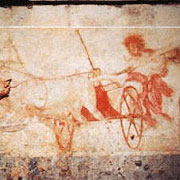 It is an ancient tomb located in Vergina, 64,000 meters away from Southwest of Thessaloniki, North of Greece. Philip II of Macedon was buried here. The tomb dates back to the middle of the 4th century BC. The tomb has two chambers (the small chamber in the front and the big one at the back). A marble coffin is placed in the middle of the back room. A pure gold box containing the bones of the king and the exquisite gold crown are found in the coffin. These archeological relics are the only ones found in Greek archeological works.
It is an ancient tomb located in Vergina, 64,000 meters away from Southwest of Thessaloniki, North of Greece. Philip II of Macedon was buried here. The tomb dates back to the middle of the 4th century BC. The tomb has two chambers (the small chamber in the front and the big one at the back). A marble coffin is placed in the middle of the back room. A pure gold box containing the bones of the king and the exquisite gold crown are found in the coffin. These archeological relics are the only ones found in Greek archeological works. Published in Confucius Institute Magazine
Published in Confucius Institute MagazineNumber 23 Volume VI. November 2012.
View the PDF print edition






















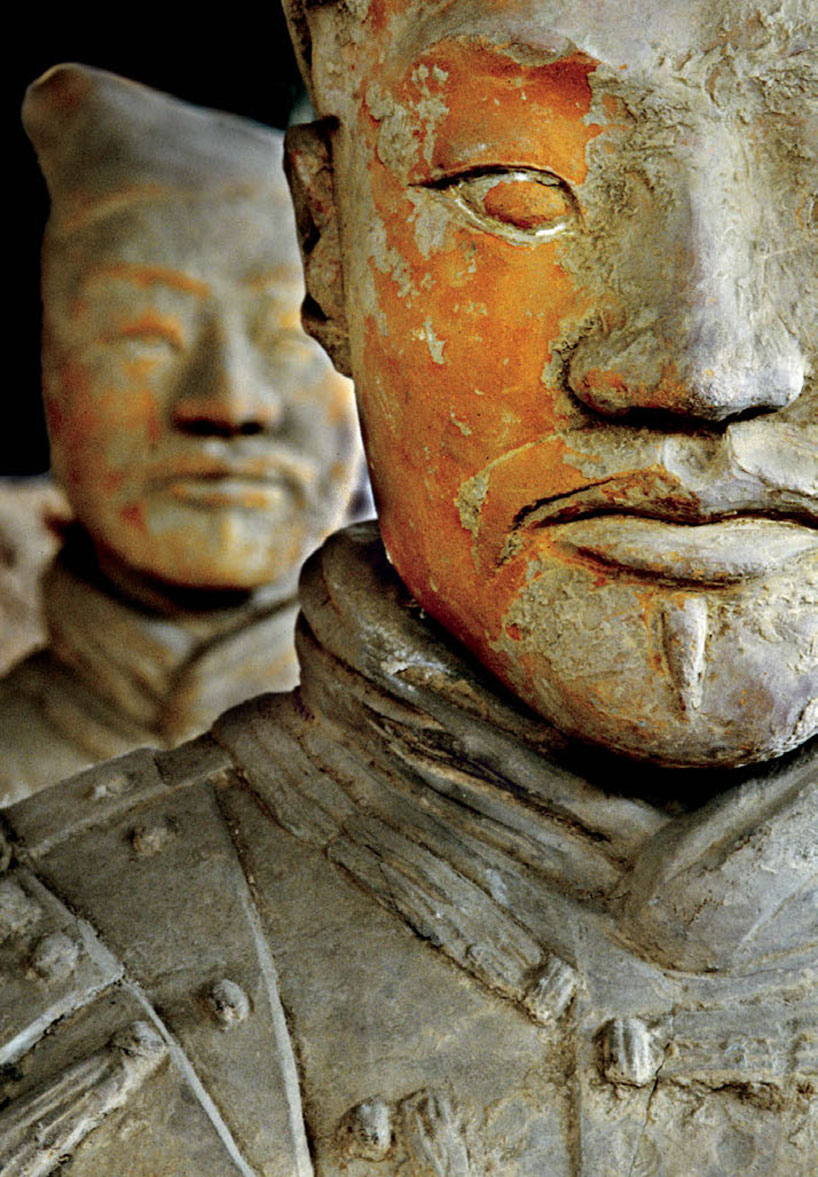


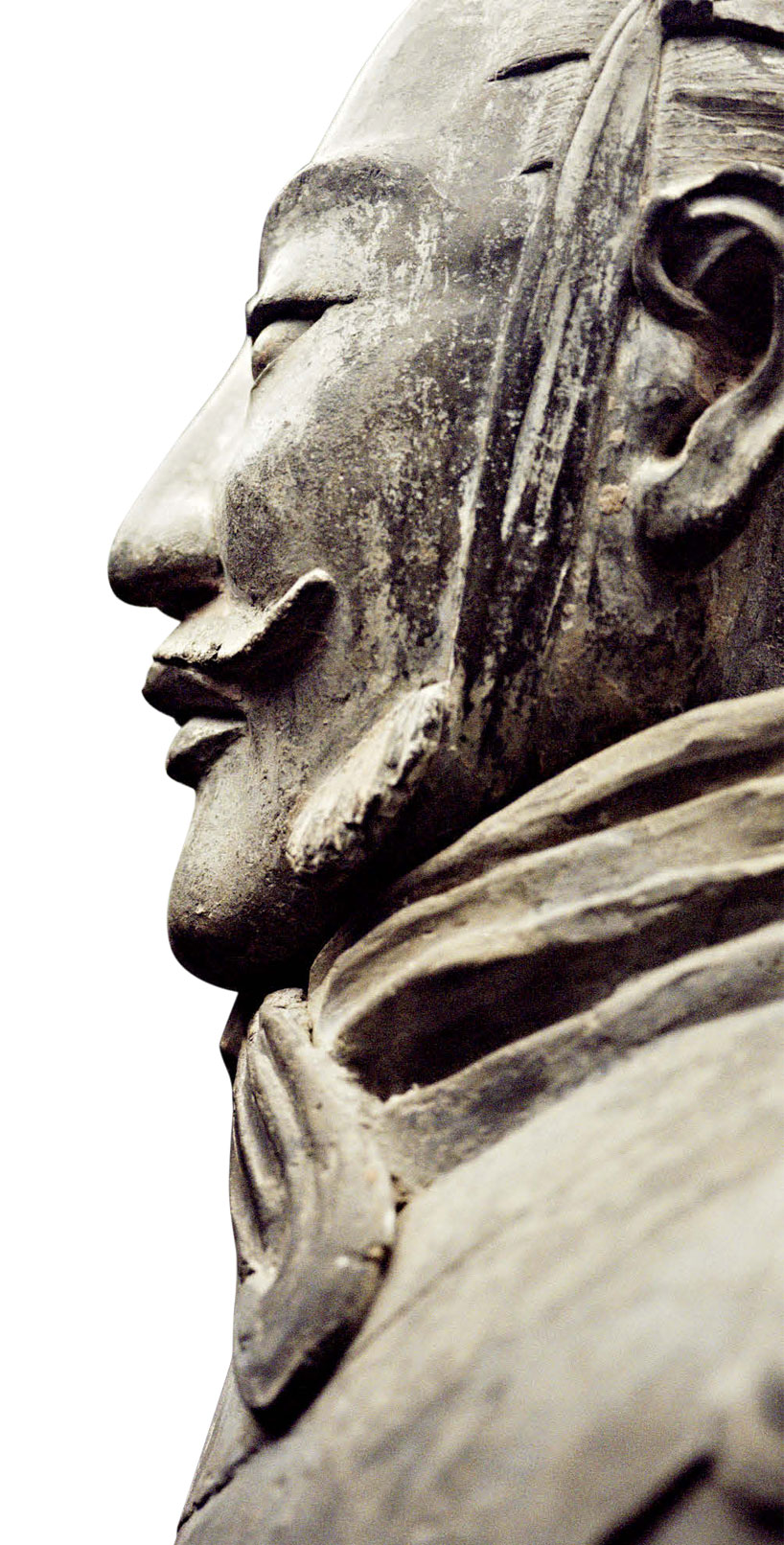
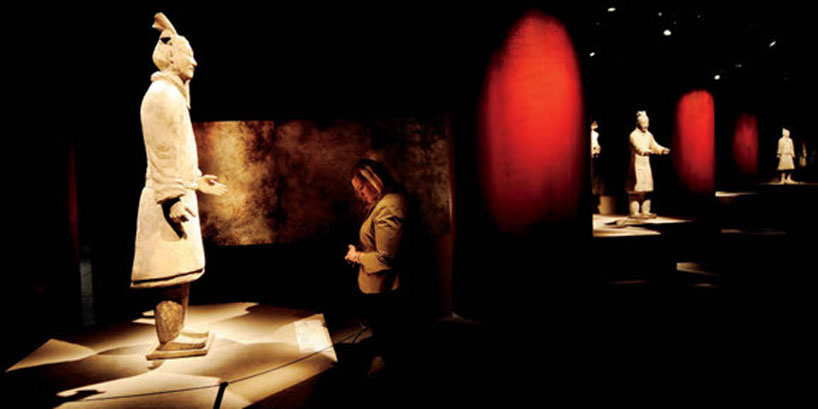

No hay comentarios:
Publicar un comentario